- COLLAR
- The ceremonial neck-chain of an Order of Knighthood, worn instead of a sash
and emblem on state occasions by members of the highest class of that Order, and
often seen surrounding a royal or princely coat of arms once frequent on royal
standards, a modern example would be the collar of the order of the golden fleece
around the arms on the royal standard of Spain.
![[collar]](../images/v/vxt-d091.gif)
The Royal Arms, Spain (fotw)
- COLLARED
- See gorged.
- COLONIAL FLAGS/ENSIGNS
- The flags of those areas or countries which in the past were under the political
control of another country, or of the officers appointed to administer that area or
country but see note below (also
archivexillum,
badge 2),
blue ensign 1),
canton flag).
and colonial jack.
![[colonial flags]](../images/v/vxt-d503.gif)
From left: Government Ensign of British Honduras 19191981 (fotw);
Civil Ensign of French Morocco 1919-1956; Flag of the Portuguese Colonial Governor
General c19121975 (fotw)
Please note that whilst a number of countries still
posses territory overseas, the term colony (therefore colonial) is no longer used,
with the areas concerned being named a dependent and/or overseas territory, overseas
department or similar, or are considered an integral part of the motherland.
![[colonial flags]](../images/v/vxt-d503a.gif)
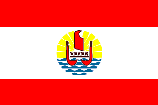
From left: Falklands Islands (fotw); Saba and Curacao; Netherlands Antilles; French
Polynesia (fotw)
- COLONIAL JACK
- 1) In UK usage the term, now obsolete, for a square blue jack defaced with the same badge or arms as the
relevant colonial blue ensign, that could be flown with this ensign by vessels belonging to or hired by the
governing authorities of that colony see
colonial flags/ensigns,
blue ensign 1),
government service jack under jack and note below
(also defaced 1) and
jack).
- 2) In UK usage a term that may also be used for the flag (usually the relevant defaced ensign but occasionally
another design) that was flown as a jack by the warships of those dominion navies serving under the white ensign
see white ensign 1) and
naval jack under jack.
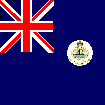
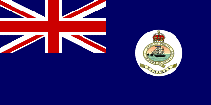
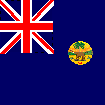
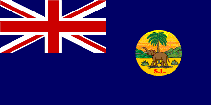
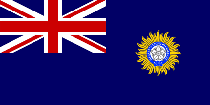
From left: Blue Jack and Ensign of The Bahamas 1904 1923 (CS and fotw);
Blue Jack and Ensign of Sierra Leone 1889 1914 (CS and fotw); Jack of HM Royal Indian Navy 1934 1947 (fotw)
Please note that the term colony (therefore colonial) is no longer used, but that
vessels belonging to the governing authorities of a British dependent territory are still entitled to wear a square
blue jack defaced with the arms or badge of that territory, however, it is not known whether any actually do so at
the present time
- COLOUR (or COLOR)
- 1) 1) A heraldic term for any tincture (or colour) that is not a metal or
a fur-
see enamel, metal, mixed tinctures and tinctures in appendix III
(also rule of tincture).
- 2) The official ceremonial flag of a military unit (originally of an infantry unit
only), and in this context it is sometimes used in the plural when referring only
to a single flag regimental colour, unit colour, queens, kings or royal colour,
national or presidential colour etc but see
colours 2)
(also badge 3),
banner 6),
company colours,
'presidential colour 2)',
second colour and
stand 1)). see supplemental note
- 3) In some countries (although entirely military in origin) the ceremonial
flag of a non-military organization - such as the police or fire service - that
is entitled (or has assumed the right to bear) to bear such colours - but see also
parade flag and the note below.


Regimental Colour, 1st Battalion of The Black Watch, UK (Graham Bartram);
Queens Colour, 1st Battalion of The Black Watch (Graham Bartram)
Please note that the self-adopted flags of various
non-governmental or semi-governmental organizations, whilst often being given the
reverence and treatment normally shown to an officially awarded colour, are
strictly speaking parade flags and not colours.
Please note also, that there are basically three ways
involving a sleeve by which a parade flag or military colour may be affixed to
its staff - with decorative nails (often a precisely regulated number of nails),
by grommet and clip or by tab and hook. Note also however, that the practice of
tying a colour to its staff, or attaching it by cloth loops or metal rings is
still occasionally seen (see also
grommet 1),
nails,
ring 4),
sleeve 2),
'tab' and ties).
- COLOUR BEARER (or COLOR BEARER)
- One who bears the regimental, unit, or national colour (see also
balcanifer,
colour 2),
cornet 3),
enceniator,
ensign 4),
gonfalonier,
standard bearer and
vexillary).
- COLOUR (or COLOR) BELT (or SLING)
- See flag belt.
- COLOUR GUARD (or COLOR GUARD)
- 1) The ceremonial escort of the standard bearer, symbolically responsible
for guarding the colour during a military parade (see also
colour 2) and
standard bearer).
- 2) The guard in attendance when the national colours are raised or lowered
ashore or afloat with full ceremony (see also colours 5)).
- 3) See colour party 1) below.
- COLOUR MATCHING SYSTEM(S) (or COLOR MATCHING
SYSTEMS)
- The system or systems by which the exact tone or shade of colours may be identified and reproduced.
Please note that whilst a number of systems (international, national and proprietary) for
identifying colours by numbers or names are listed separately herein, several
(particularly national) systems are not - largely because they receive limited
use or that use is apparently restricted to their countries of origin (see also
British Colour Code,
'Cable Number',
CMYK,
International Colour Code and
Pantone Matching System).
- COLOUR PARTY (or COLOR PARTY)
- 1) In US and some other usage, the standard bearer and colour guard collectively
(see also colour 2), colour guard 1)
and standard bearer).
- 2) In naval usage, the personnel detailed to carry out the ceremonies of morning
and evening colours (see also 'colour guard',
'sunset' and 'colours 5').
- COLOUR SERGEANT (or COLOR SERGEANT)
- In US military usage, the non-commissioned officer who carries the national colour
(see also colour 2) and colours 2)).
Please note that in British military usage this rank, now partially obsolete, had
and has (as far as can be discovered) no specific duties connected with escorting or
guarding the colour or colours. Historically however, the senior sergeants within any
battalion or regiment (for whom the rank was originally instituted) could have such a duty.
- COLOURS (or COLORS)
- 1) Figuratively any national flag.
- 2) In UK and US practice (and in some other cases), one or both of the flags
issued simultaneously to a military unit (see banner 6),
colour 2), company colours,
presidential colour,
second colour,
stand 1) and note below).
- 3) Generally at sea, any flag that denotes nationality.
- 4) Specifically at sea, the ensign of a merchant vessel, or the suit of flags
worn by a warship (see also ensign and
suit of flags).
- 5) The ceremony of hoisting the ensign and jack particularly (but not exclusively)
aboard a warship or naval shore establishment morning colours, conducting or
making colours (see also sunset).
- 6) The combination of colours whether metal or tincture - derived from the personal or house flag of an individual,
company or association (see also Appendix III, 'house flag 3)' and
'personal flag 3)').
Please note, that in military forces where it is customary
for some or all units to carry a pair of colours, the first of these colours now generally
represents the head of state or the state itself and is known - depending on the country
concerned - as the king's, queen's, sovereign's, royal, national, president's, presidential,
or state colour. The second represents the unit itself and is known as the regimental,
battalion, squadron, organizational, or unit colour. The first type of colour is generally
(but not invariably) based on the design of the national flag, and in a few cases (such as
in the British and Canadian regiments of foot guards) it is the regimental colour that
derives from the design of the national flag. In addition, in some countries a single
distinctive colour carried by some military forces (such as the British Royal Navy or the
Indian Air Force) may be designated as a sovereign's (king's, queen's) or president's colour.
- COLOURS OF DEFIANCE (or COLORS OF DEFIANCE)
- See flag of defiance.
- COMBATANT
- See respectant in appendix V.
- COMMAND FLAG
- See flag of command.
- COMMAND PENNANT
- 1) In naval usage, a generally triangular and/or swallow-tailed pennant flown
at sea that, unlike a flag of command, broad pennant or burgee command pennant,
does not replace the masthead pennant but which signifies an officer in command
of other ships who is below the rank of commodore a group command pennant, flotilla
command pennant, senior officers pennant, squadron command pennant and others
(see also broad pennant,
burgee command pennant,
flag of command,
masthead pennant 1),
private ship and
senior officer afloat pennant).
- 2) In US usage, a unit equivalent to the above but of aviation or marine forces.
![[collar]](../images/v/vxt-d095.gif)
From left; Squadron Command Pennants: UK (Graham Bartram); Denmark (fotw);
Flotilla Command Pennant: Netherland (CS)
Please note with regard to 1) - not to be confused with the senior officer afloat
pennant which (certainly in the case NATO and related services, and of countries whose navy
bases its traditions on those of the RN) is only flown whilst alongside or in harbour.
Note also, that a distinction has been drawn between the standard masthead pennant flown
by commissioned warships (occasionally called a pennant of command), and the command
pennants as defined above that are flown subordinate to it.
Further to 1) also please note that in the former Austro-Hungarian Navy and in some others, the practice of
hoisting a command pennant with (or without) the hoist being stiffened by a frame was itself indicative of rank -
see frame 2).


- COMMENDATION BANNER
- See banner 5).
- COMMENDATION FLAG (or PENNANT)
- See award flag.
- COMMEMORATIVE FLAG
-
- A flag made to celebrate or to mark a particular occasion, such as an anniversary,
holiday or international congress - an occasional flag.
![[Queens golden jubliee flag]](../images/v/vxt-d567.gif)
![[1876 centennial US flag]](../images/v/vxt-d567a.gif)
![[17th International Congress of Vexillology]](../images/v/vxt-d567b.gif)
From left: Golden Jubilee of HM The Queen 2002, UK; Centennial Flag 1876, US; 17th International
Congress of Vexillology, RSA (fotw)
- COMMERCIAL FLAG
- See house flag 1) and
corporate flag.
- COMMISSIONING or COMMISSION PENNANT
- See masthead pennant 1). see supplemental
note
- COMMODORES BROAD PENNANT
- See broad pennant.
- COMPANY COLOURS
- Small additional colours carried by foot regiments of the British and Canadian
Brigade of Guards, and a survival of the general 16th/17th Century practice of
carrying a colour for each company in a regiment camp colours or silks (see
also camp colour 1),
colour 2),
colours 2),
postures and
stand 1)).
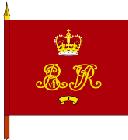
Company Colour, No 1 Company, 1st Battalion of The Irish Guards, UK (Graham Bartram)
Please note that a regimental stand of nine colours
was not unknown for an English regiment of foot in the mid-17th Century.
- COMPANY FLAG
- See corporate flag.
- COMPARTMENT
- A heraldic term for the symbolic base upon which a shield and supporters rest
in a full set of armorial bearings but compare with coupeau
and mount (see also
Appendix IV,
armorial bearings,
shield and
coat of arms).
- COMPLEMENT
- 1) In the International Code of Signals, two or more flags or pennants added
to a basic signal to give clarity or precision to the message (see also
international code of signal flags,
international code of signals and
signal flag).
- 2) In heraldry a full moon see moon 2) with following note.
- COMPLETE (ARMORIAL) ACHIEVEMENT
- See armorial bearings.
- COMPLIMENTARY FLAG
- See courtesy flag.
- COMPONY
- The heraldic term used when an ordinary or a border is composed of squares (or occasionally
rectangles) in alternating tinctures gobony, gobone or gobonated (see also
counter-compony,
ordinary and
tincture).
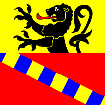
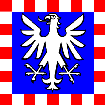
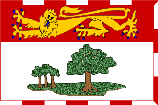
Flag of Estιvenens, Switzerland (fotw); Flag of Tegerfelden,
Switzerland (fotw); Flag of Prince Edward Island, Canada (fotw)
- COMPONY COUNTER-COMPONY
- See counter-compony.
![[colonial flags]](../images/v/vxt-d503.gif)








![[collar]](../images/v/vxt-d095.gif)
![[Queens golden jubliee flag]](../images/v/vxt-d567.gif)
![[1876 centennial US flag]](../images/v/vxt-d567a.gif)
![[17th International Congress of Vexillology]](../images/v/vxt-d567b.gif)





![[collar]](../images/v/vxt-d091.gif)
![[colonial flags]](../images/v/vxt-d503a.gif)

